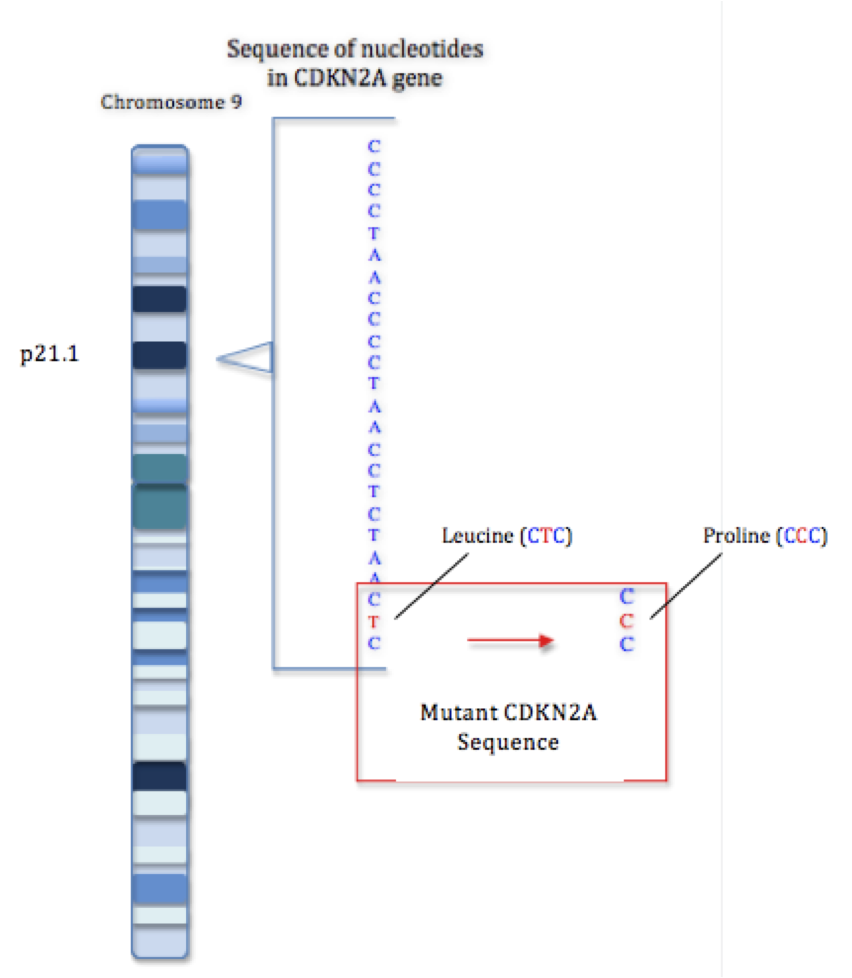We predicted UV radiation would cause a T>C transition at base pair 298 of the CDKN2A gene in human DNA at 9p21, resulting in a leucine to proline switch, identical to heritable mutations seen in individuals predisposed to cutaneous malignant melanoma, because research conducted through Leiden University has shown a positive correlation between UV generated point mutations in DNA and skin cancer (de Guijl et al, 2001). To artificially induce mutations, purified human DNA was irradiated with a UV lamp that emitted UV-B rays strong than the sun’s radiation. PCR was used to amplify the DNA segment containing the T to C transition at base pair 298 of the CDKN2A gene (Soto et al, 2005). The presence of bands after PCR was performed, with an annealing temperature of 50°C, indicates successful annealing and confirms amplification of the desired product. In various assays, optimization was attempted to improve product strength after obtaining a band with specificity, by increasing the DNA template used in the assay. However, this resulted in lowered fidelity, therefore further optimization is necessary to confirm the ability of UV radiation to induce the same hereditary mutation in the CDKN2A sequence as present in people with a family history of melanoma. Confirming this correlation could lead to awareness in the necessity for protection against the mutating affects of UV radiation on DNA sequences, both in the scientific and public communities.
|
||||
 |
||||